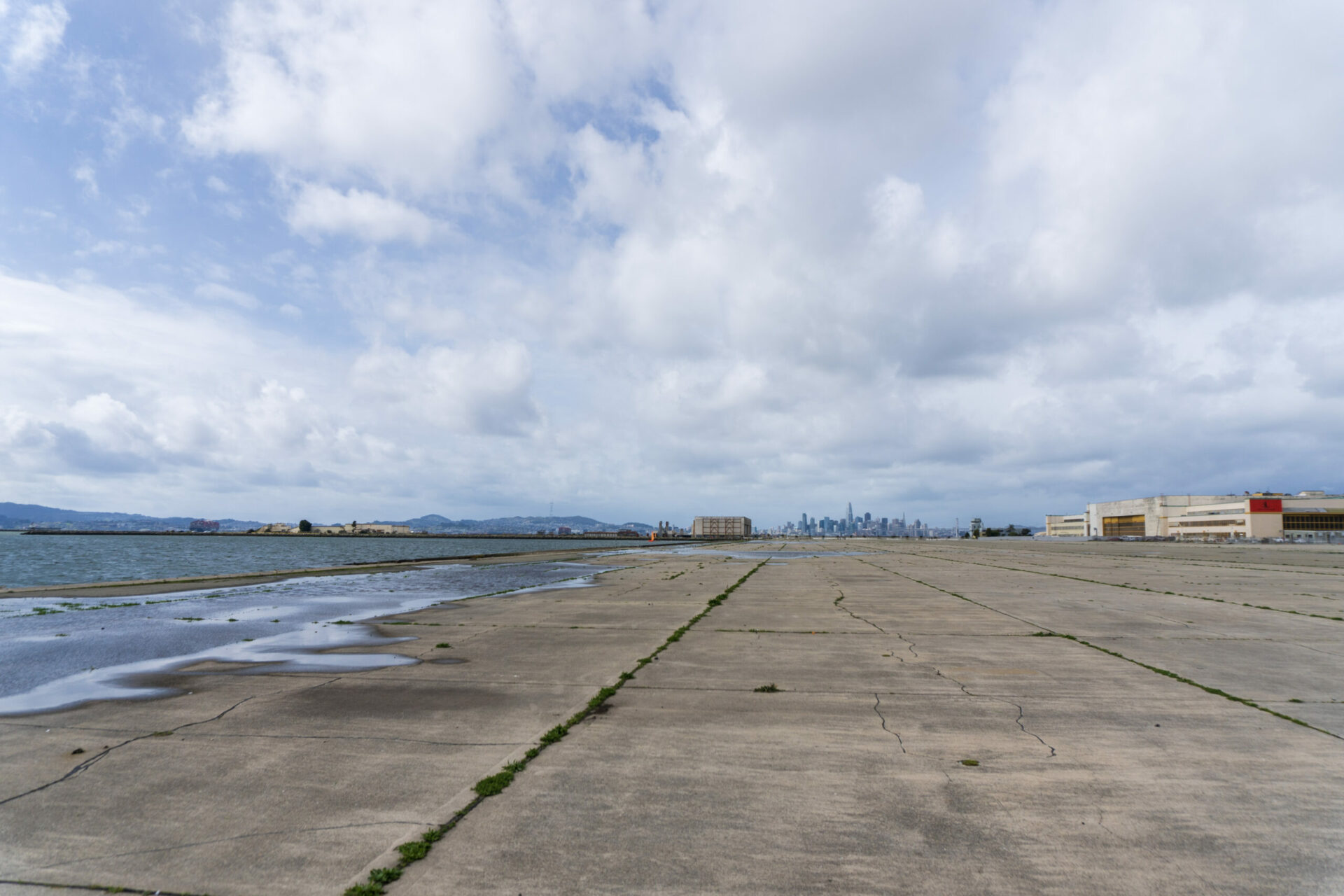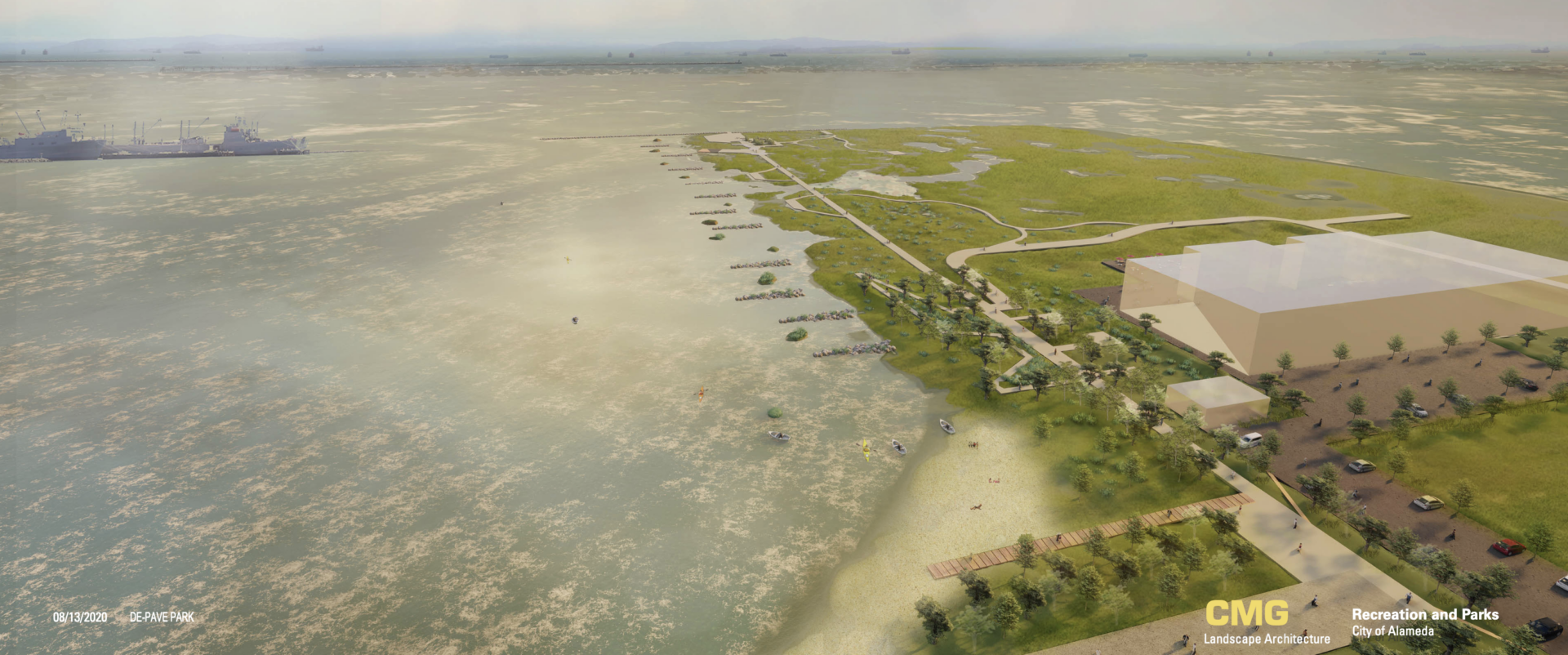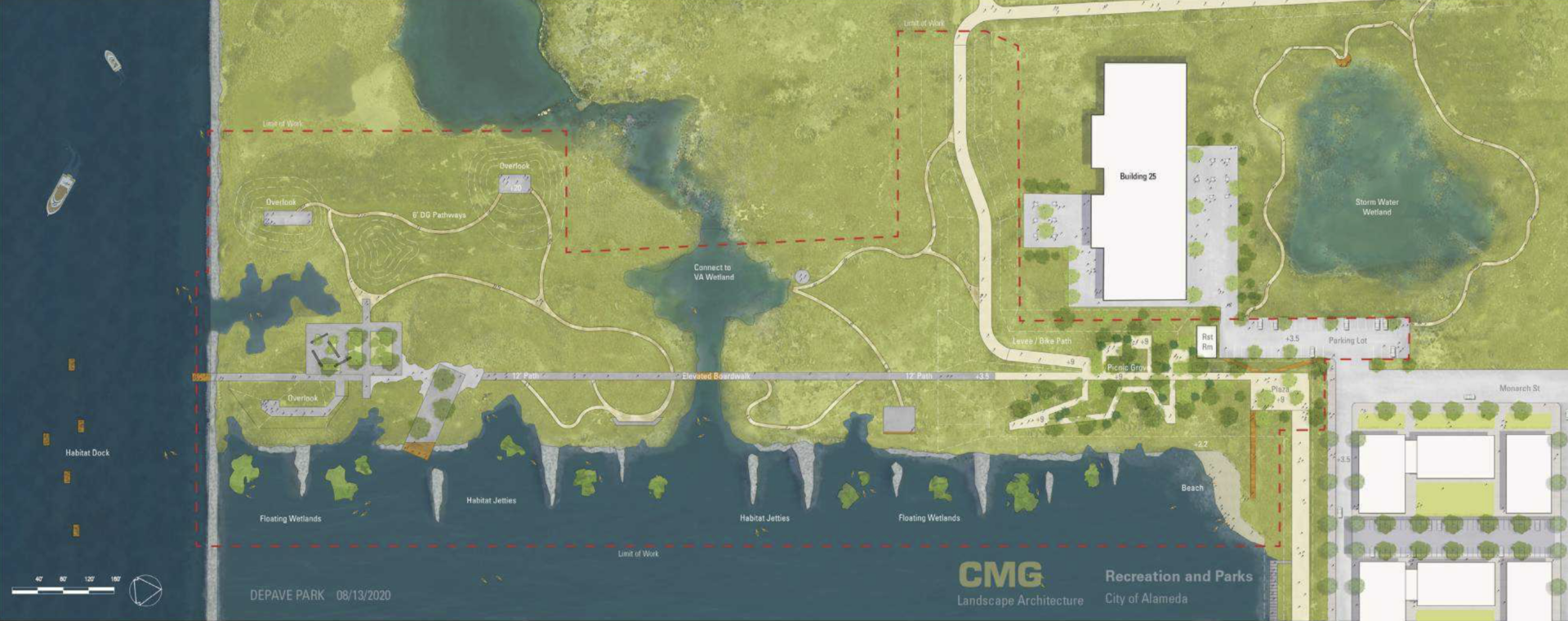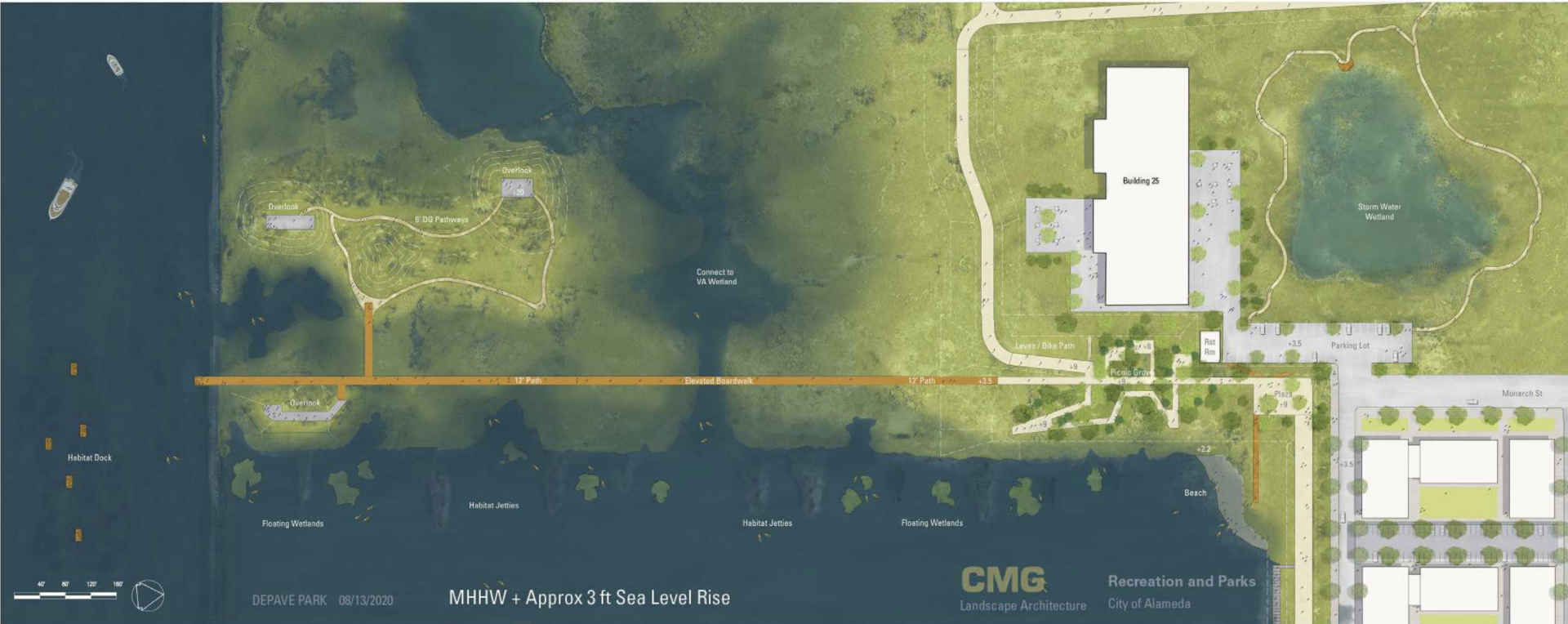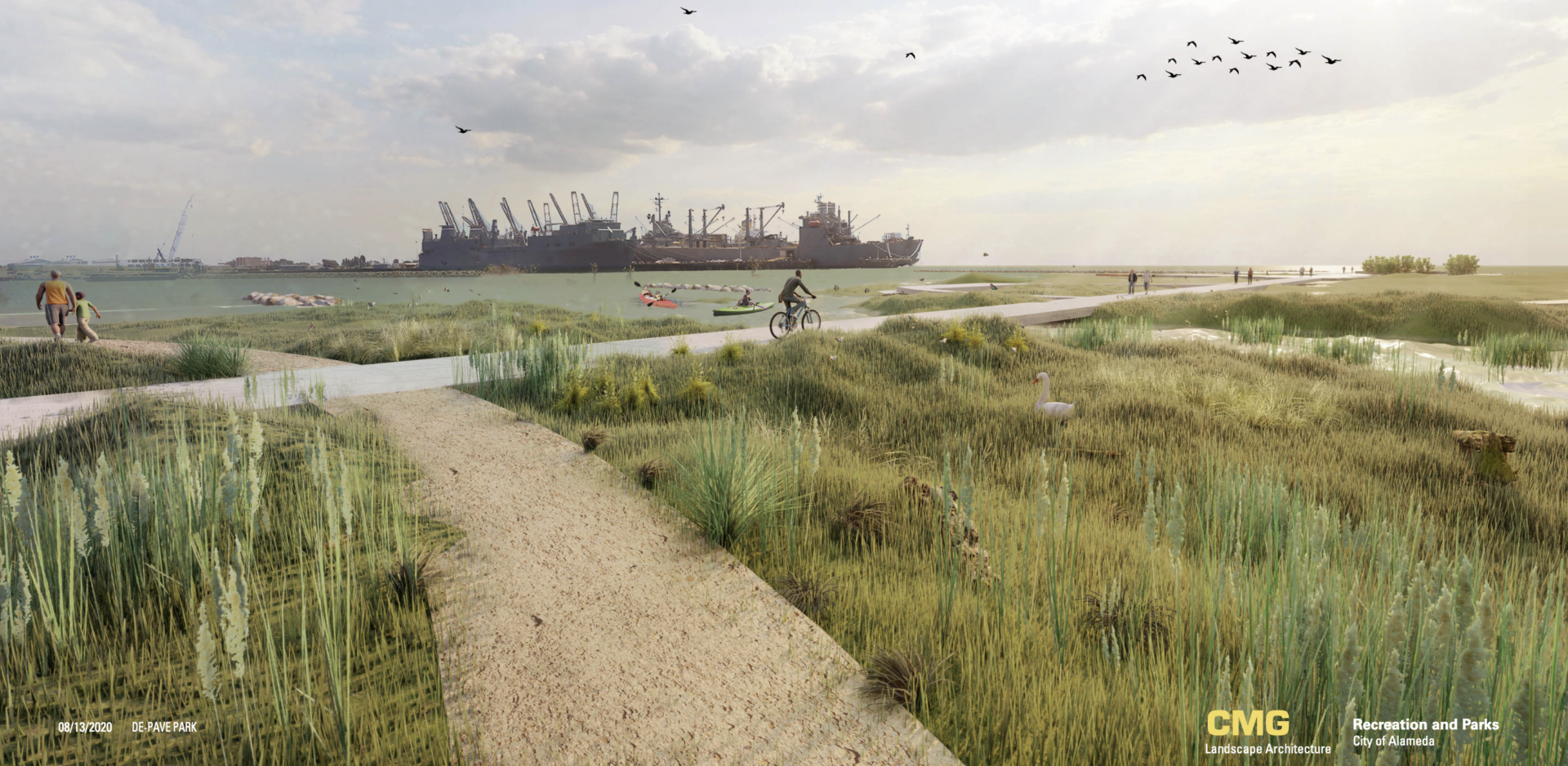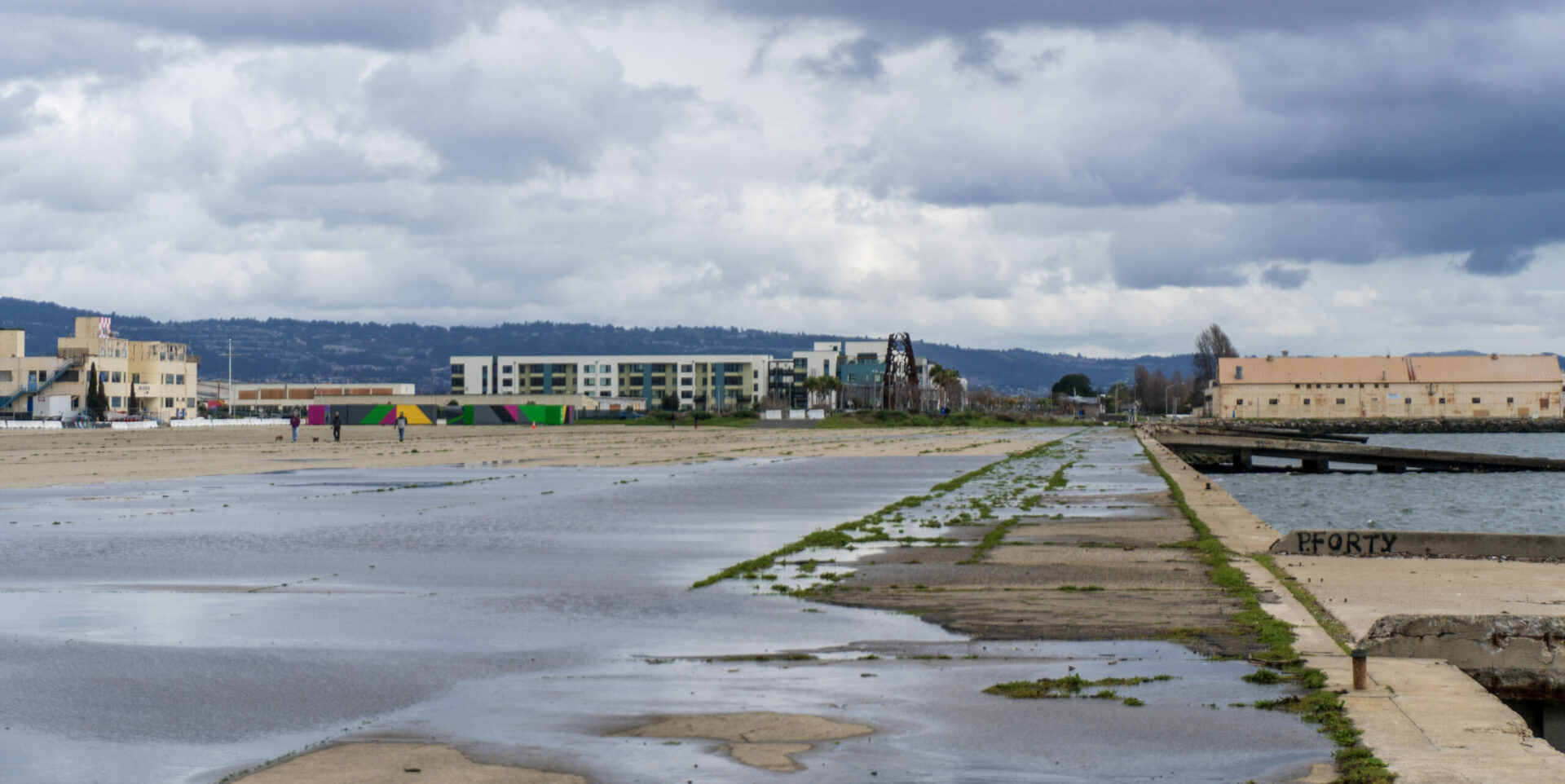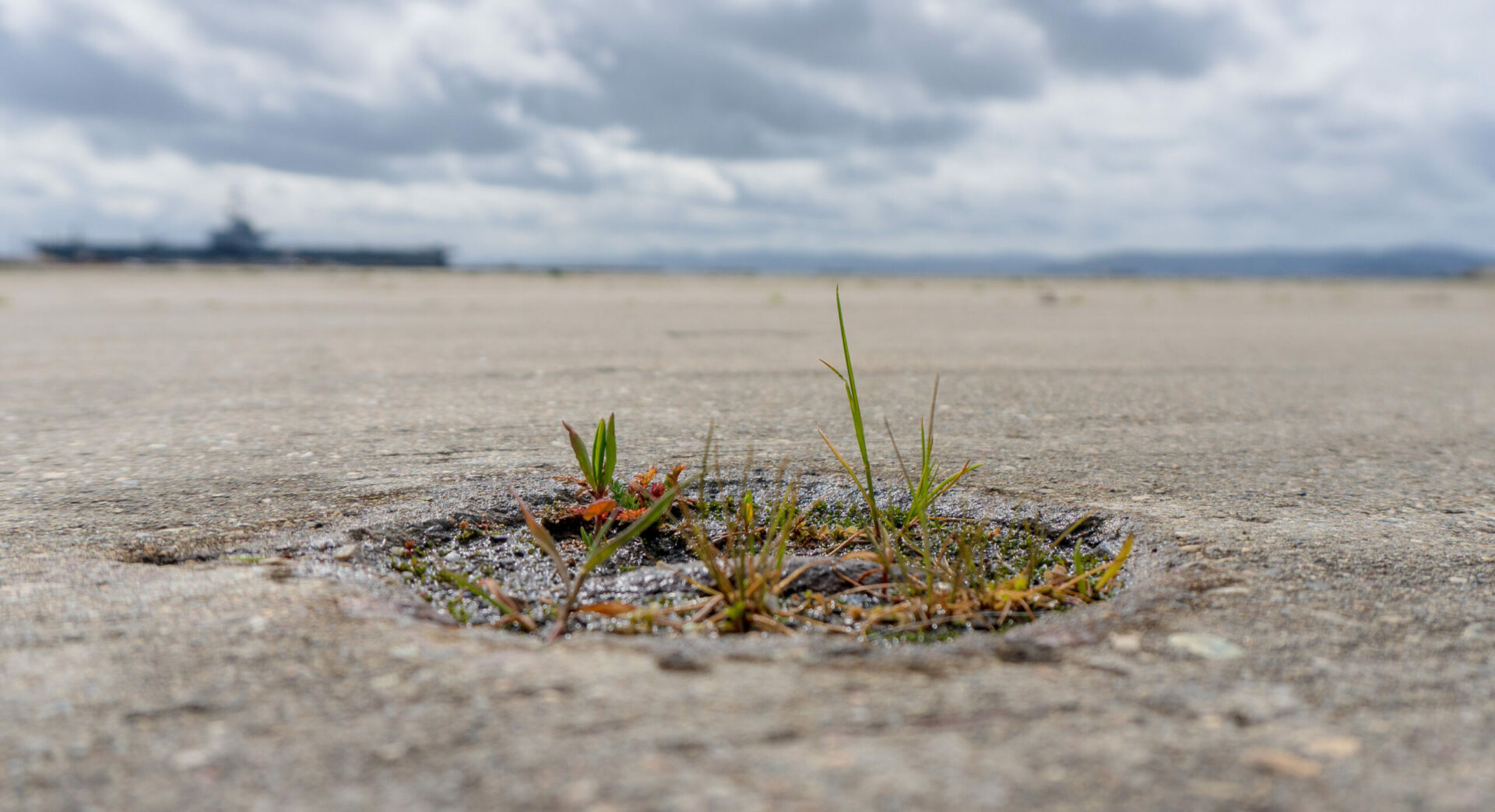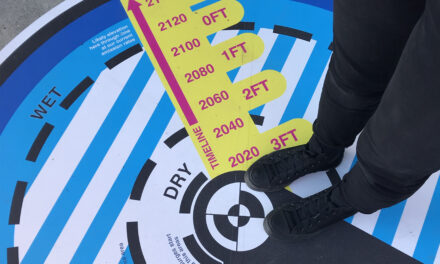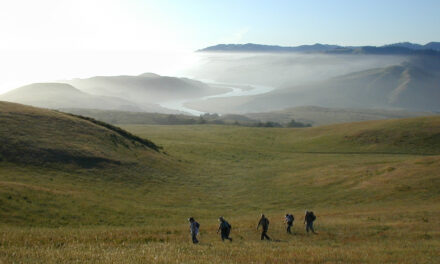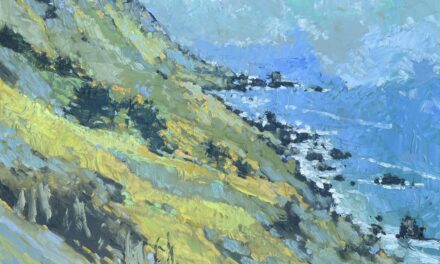Hard Park Going Soft in Alameda
On a recent drizzly afternoon, a vast paved lot on the western side of Alameda Point’s Seaplane Lagoon was flecked with bicyclists, dog walkers, and puddles. This concrete hardscape, the size of nine football fields, was once the tarmac of the old Alameda Naval Air Station. But before that, this land was a flourishing wetland that fed into San Francisco Bay. Soon, it will gain a fresh chance at life. The City of Alameda is planning to depave the defunct airfield and transform it into an ecological nature park, which will restore the shoreline to a tidal marshland and help the City of Alameda adapt to rising sea levels.
The vision, says Justin Long, director of Alameda Recreation and Parks, is to create a healthy, thriving environment for the whole community, human and non-human alike, where people can not only enjoy themselves but also see a climate-resilient landscape in action. “People use the site in spite of its current condition, and this is a way that we can actually celebrate that use and also have a positive environmental impact,” he says. Alameda City Council will vote to approve the final master plan design on March 19.
In addition to walking and biking trails, so-called De-Pave Park will include a Learning Lab where environmental educators can hold talks on topics like the colony of endangered California least terns in the Veterans Affairs Preservation Area next door. In lieu of a typical park with swings and slides, there will be an area for “nature play” where visitors can traverse structures made of rocks and wood, or access tidepools.
“It’s really creating opportunities for those little touch points with nature,” says Long. “It’s a different experience that we’re trying to bring to the public.”
To fulfill this vision, the city will first need to break up the concrete. Instead of getting carted away to a landfill as often happens, the pavement here will be kept on-site and reused to build part of a levee system protecting Alameda’s shoreline. Planners project that by repurposing materials and restoring the wetlands De-Pave Park will offset its carbon footprint within four years of completion.
Depaving this site will also allow urban runoff, which is often laced with oil, grease, and dog poop, to flow through the natural filtration system of wetland vegetation and replenish groundwater. As the marsh regains ecological function, the site will become climate positive, mitigating the original carbon footprint from the naval base’s construction within 25 years, according to Long.
At first, the park won’t have much wetland, but as the sea level rises the park’s shoreline should receive rising tides and form new wetlands. With an estimated 85% of San Francisco Bay’s former wetlands now walled or paved over with concrete, this park is “an opportunity to demonstrate a different way of thinking about shoreline resilience and sea level rise and how we can work with what’s really coming versus hardening the shoreline further and creating more issues,” says Natasha Dunn, a project manager with San Francisco Bay Restoration Authority. The authority gave the project an $800,000 grant for planning and community outreach in 2023.
Within walking distance of the future De-Pave Park, the non-profit Alameda Point Collaborative is working with the city to develop supportive housing for a low-income community. Because this is a different kind of park — one that centers access to nature and environmental education rather than play structures or pickleball courts — the city has worked with APC to involve the local community in the planning process. “We’ve brought them along the whole time, introducing the park and getting their feedback,” he says. To Long, it’s crucial that locals can continue to enjoy the same site for activities like biking and fishing.
Construction will start in seven years, by Long’s estimate. The biggest hurdle will be funding. De-Pave Park designers estimate construction today would cost $25 million, but in seven years, that number will likely grow to $35 million or more with inflation. Long has no doubt the park will get built, though. With the king tides already lapping at Alameda’s feet, people will have to confront sea level rise. “There will be a lot of money coming for climate adaptation because it’s just going to be necessary,” he says.
Though De-Pave Park has wide community support, some may lament the change. A man and woman I encountered on the drizzly afternoon of my visit had differing views of the park plans. “Nature is everywhere, but where else can you see wide-open pavement like this?” said the man, who had been sketching big circles on the concrete canvas with chalk. The woman, though, approved of the de-paving vision. “I like nature,” she said. “I think it’s a good idea.”
What’s indisputable is that the site of the old naval base is a beloved part of Alameda’s history and integral to its future. “This is a way that we can actually celebrate that use and have a really nice environmental impact,” Long says, “and allow nature to start doing what it should’ve been doing the whole time.”






